The Freedom's Frontier National Heritage Area Gallery
Introduction
Text-to-speech Audio
The second floor exhibition galleries map-out Kansas City history. Beginning with the Freedom's Frontier National Heritage Area Gallery, the early history of the surrounding areas in both Kansas and Missouri are covered. An overview of Native American tribes that lived in the area, and their subsequent removal as European settlers displaced them, serves as a foundation for the room. Highlighting the importance of the two rivers that Kansas City is situated near, the exhibit covers the Native Americans and settlers that were drawn to the prosperity of the area. Transportation, relocation, and involvement in the Civil War also serve as highlights within the exhibit, providing patrons with understanding of the early 1800s through the 1870s in the Kansas City area.
Images
Native American artifacts on display
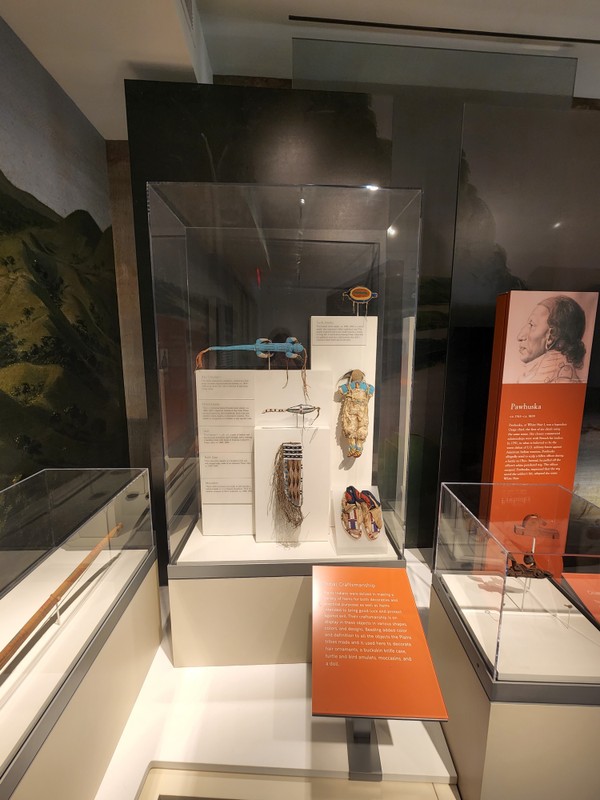
The First Residents Label
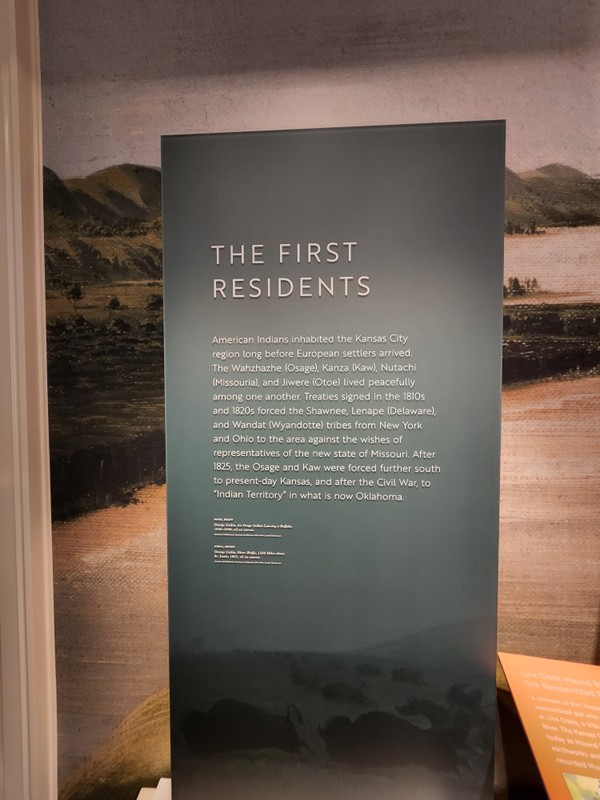
Transportation Label
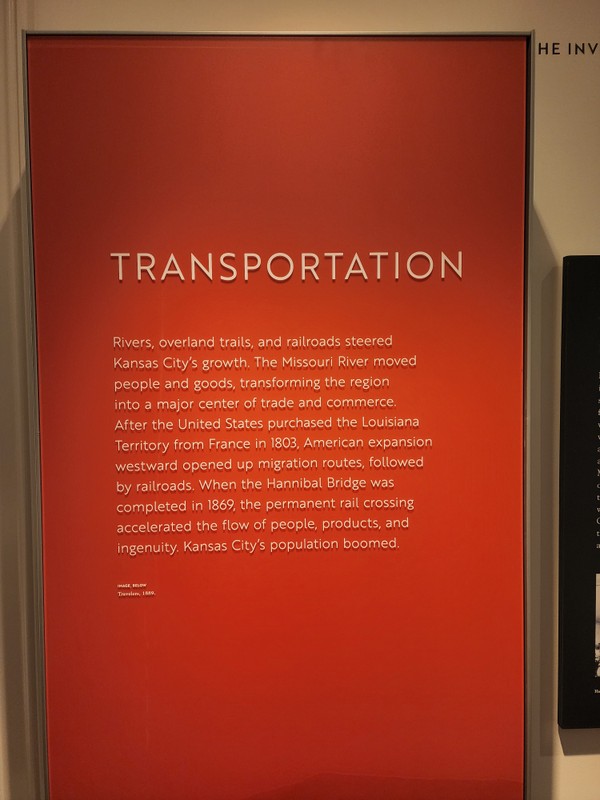
First Contact Label
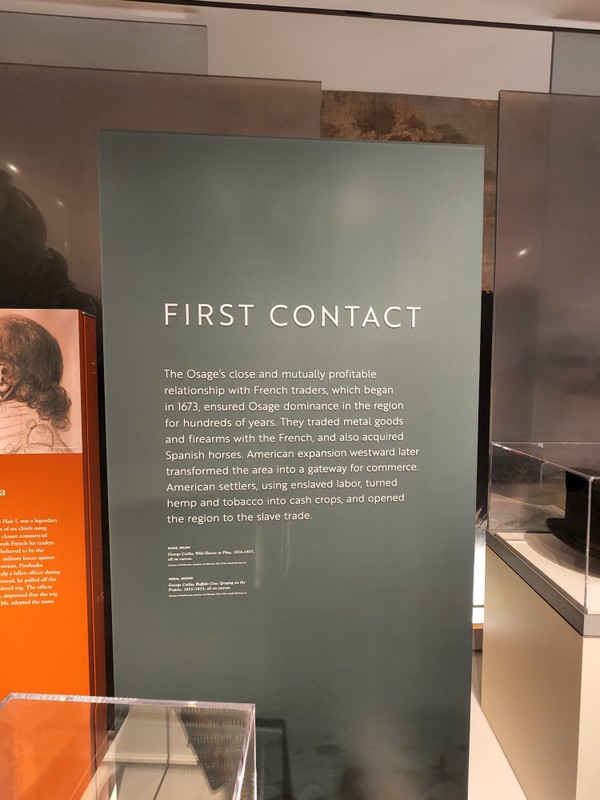
The Race for the Railroad Label
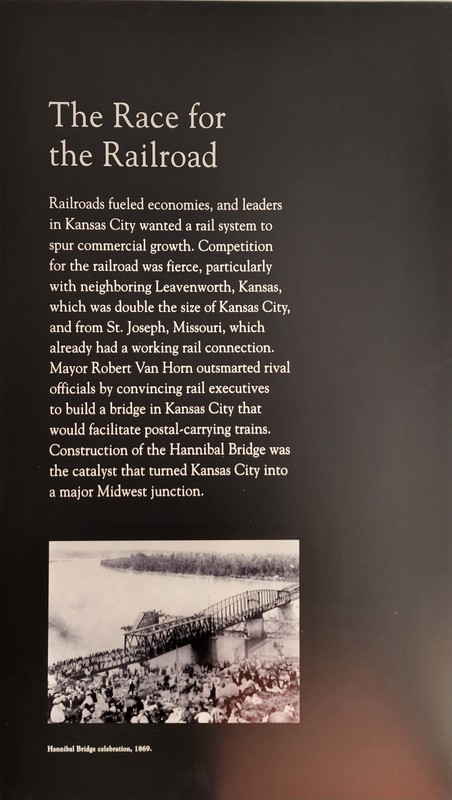
Map of Tribal Nation of Kansas and Missouri
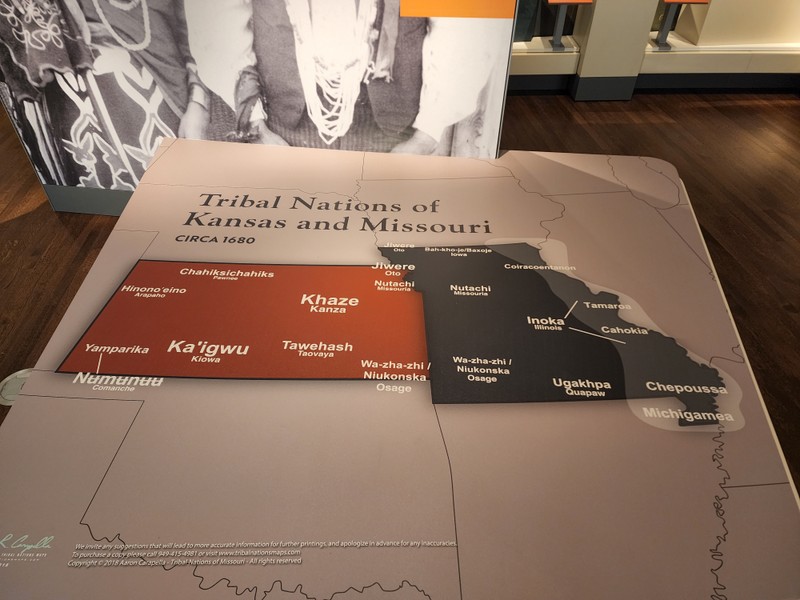
Kansas City in the Civil War Label
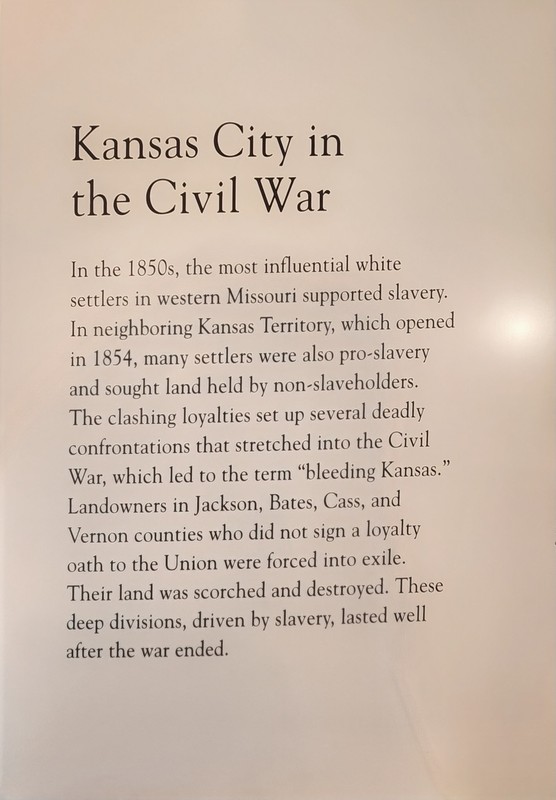
Forced Removal and Colonization Label
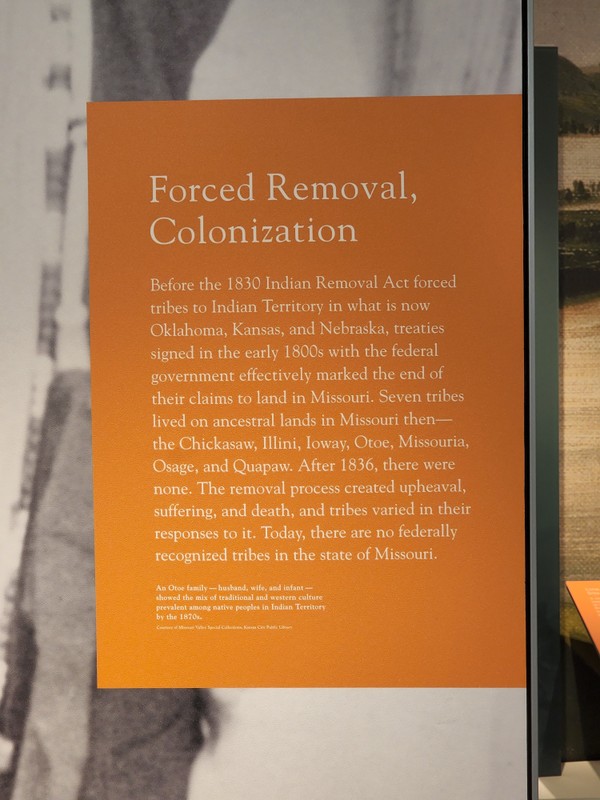
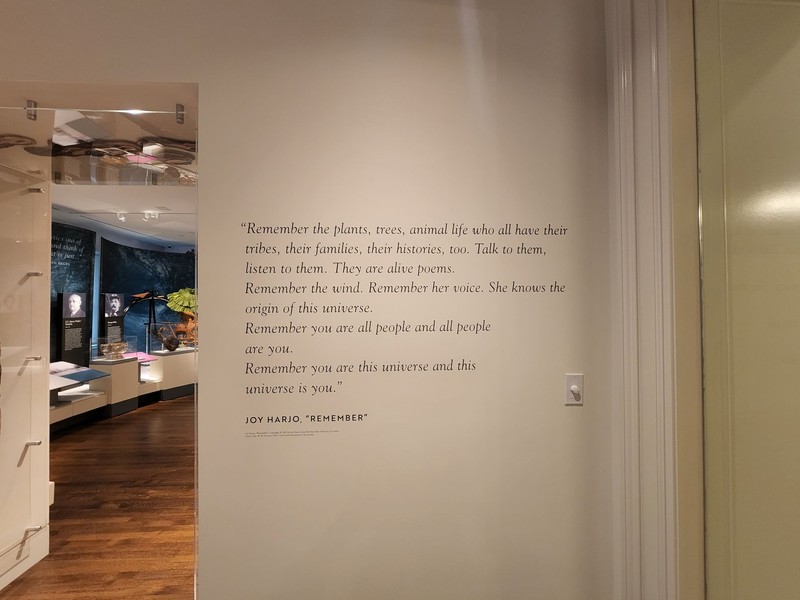
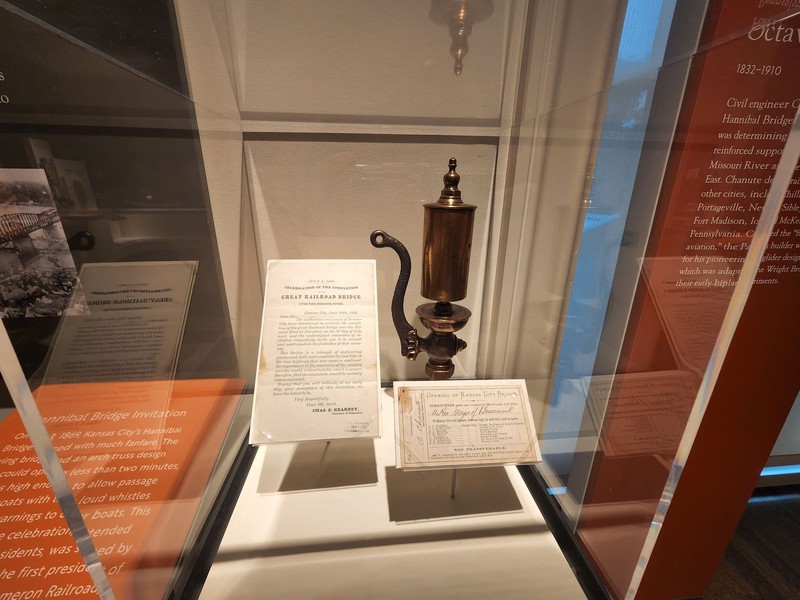
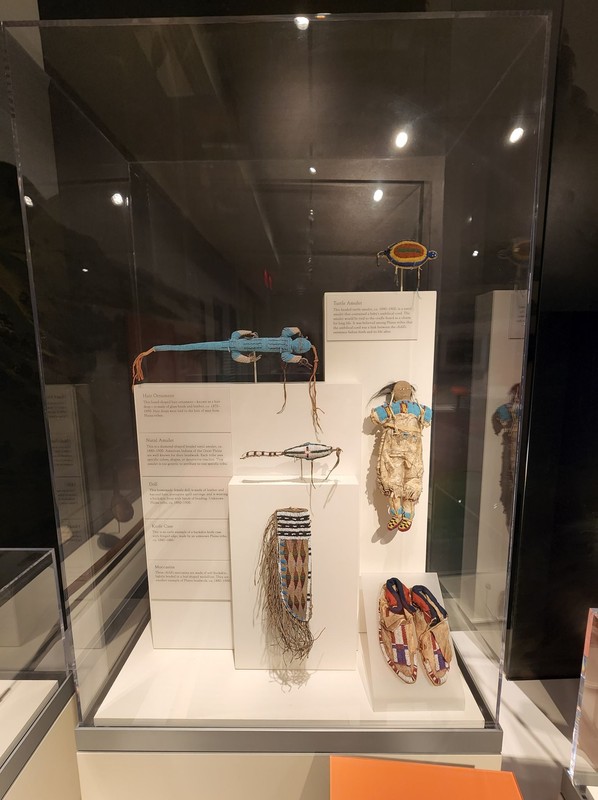
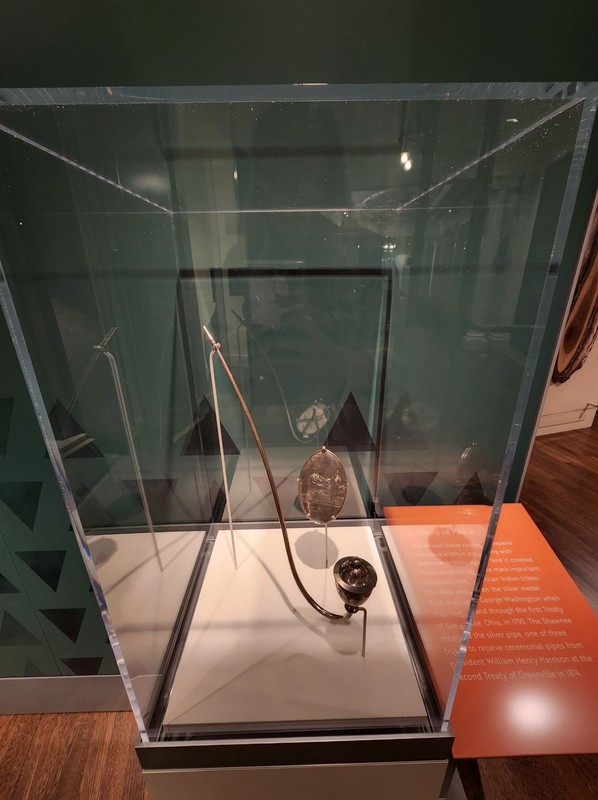
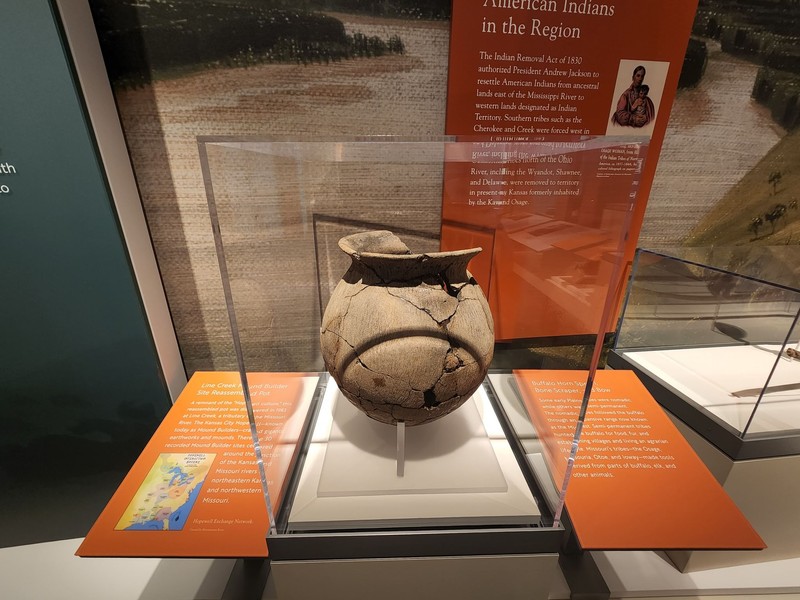
Backstory and Context
Text-to-speech Audio
Kansas City's location, situated at the confluence of two rivers, encouraged many settlers to relocate to the area for the promise of prosperity. Unfortunately, settler migration and other phenomenon led to the forced relocation of Native Americans who had long-inhabited the area. Native to the area, the Wahzhazhe (Osage), Kanza (Kaw), Nutachi (Missouria), and Jiwere (Otoe), had lived amicably among one another for decades.
Prior to mass settlements in the area, the Osage also had a long-standing relationship with French fur traders beginning in 1673, which proved to be mutually beneficial. Through trade, the Osage received guns and Spanish horses, establishing the Osage Nation as a formidable opponent in battle. Their dominance would last into the 1800s, until American expansion efforts would negatively impact the Osage, reducing their dominance and moving them to a smaller piece of land in present-day Kansas, and later to Oklahoma. Nonetheless, the Osage nation fought against American forces for their land. The first Chief Pawhuska adopted the name "White Hair" after the Osage's defeat of American military forces in 1791. As the Chief attempted to scalp a fallen military officer, a white powdered wig came off of his head and he escaped, much to Chief Pawhuska's surprise.
Meriwether Lewis and William Clark traveled through Osage territory during their Corps of Discovery Expedition. Among the expedition crew was an enslaved Black man named York, whose family was owned by Clark's father. York contributed greatly to the expedition, hunting buffalo and other game and navigating waterways and other trails. Although his vote on the expedition was considered equally among the other crew members, he would not become a free man until almost 10 years after the expedition's 1806 end.
Slavery was not uncommon in the area. Hemp and tobacco became cash crops in the region, with hemp being made into rope and other fibers, requiring extensive labor. Men, women, and children under the rule of slaveholders were forced to cultivate the crop, creating revenue for slaveholders while receiving no benefits for themselves. While slavery grew in the region, treaties were formulated to lessen Native American presence in the area. For example, an 1825 treaty removed the Osage nation from the area surrounding Fort Osage and forced them further south into a small area of land in present-day Kansas. Additional treaties removed the seven Native American tribes that inhabited Missouri: the Chickisaw, Illini, Ioway, Otoe, Missouria, Osage, and Quapaw. By 1836, there were no Native American tribes living in Missouri, and presently, Missouri houses no federally recognized tribes.
Additional treaties removed the Wandat (Wyandot), Shawnee, and Lenape (Delaware) from northeastern areas, such as Ohio and New York, and forcefully relocated them to parts of Kansas. The Indian Removal Act of 1830 would continue such displacement, moving additional tribes, such as the Cherokee and Creek, from their Southern territories to present-day Oklahoma, forcibly marched over the tragic "Trail of Tears." Forced removal of Native American tribes led to the suffering and death of innumerable Native American peoples, and such history must not be glossed-over by Americans today as to prevent such awful measures from occurring once again. Many Native American artifacts are on display within this exhibit, highlighting the artistry and craftsmanship of the many tribes that inhabited the area before displacement. Resources for the Osage, Kaw, Otoe-Missouria, Shawnee, and Wyandotte are included below to provide further information on the tribes in the present-day.
The Kansas City region's unique positioning, putting it both within Missouri as it was introduced as a state, and within the Kansas territory, led to many clashes about slavery. Both pro- and anti-slavery settlers lived in the area, although pro-slavery settlers were in larger numbers. The divide led to many deadly clashes in the 1850s up until the Civil War, where pro-slavery settlers sought to gain land away from non-slaveholders. The confrontations led to the phrase, "bleeding Kansas." Guerilla warfare by pro-Confederate Missourians in the area reached a breaking point with their destruction of Lawrence, Kansas, and subsequent massacre of almost 200 men and boys in the town. In order to quell further hostilities, Order No. 11 was issued by Union General Thomas Ewing. The Order would lead to the exile of any Jackson County residents who refused to swear loyalty to the Union. Even with such high stakes, pro-slavery landowners in certain counties, such as Jackson, Bates, Cass, and Vernon, refused to sign the loyalty oath with the Union, sending them into exile. Divides between pro-Confederates and pro-Unionists in the Kansas City area would extend past the results of the Civil War.
The Missouri River led to the growth of the Kansas City area due to its use for transporting people and goods. The Kansas City region thrived as it became a major center for commerce and trade. As westward expansion progressed, the area also experienced additional growth with the development of new transportation. Railroads were the transportation of the future, connecting cities to the lifeline of the United States. As the Kansas City area expanded, the need for railroad lines persisted, and would become the impetus for Kansas City's later growth. Prior to the construction of Hannibal Bridge, both Leavenworth, Kansas, and St. Joseph, Missouri were better equipped for growth than Kansas City. However, Mayor Robert Van Horn convinced railroad executives to construct Hannibal Bridge in Kansas City, opening in 1869. The bridge, used primarily for postal-carrying trains at first, had an arch truss design built high enough to allow steamboats to pass underneath. The bridge, designed by civil engineer and "father of aviation" Octave Chanute, thrust Kansas City forward, leading to its growth into a major Midwestern city.
Sources
Kansas City Museum, 3218 Gladstone Blvd., Kansas City, MO, 64123 (accessed March 8, 2022). Wall Plaques: Wall text. The Freedom's Frontier National Heritage Area Gallery, Kansas City Museum, Kansas City, Missouri.
